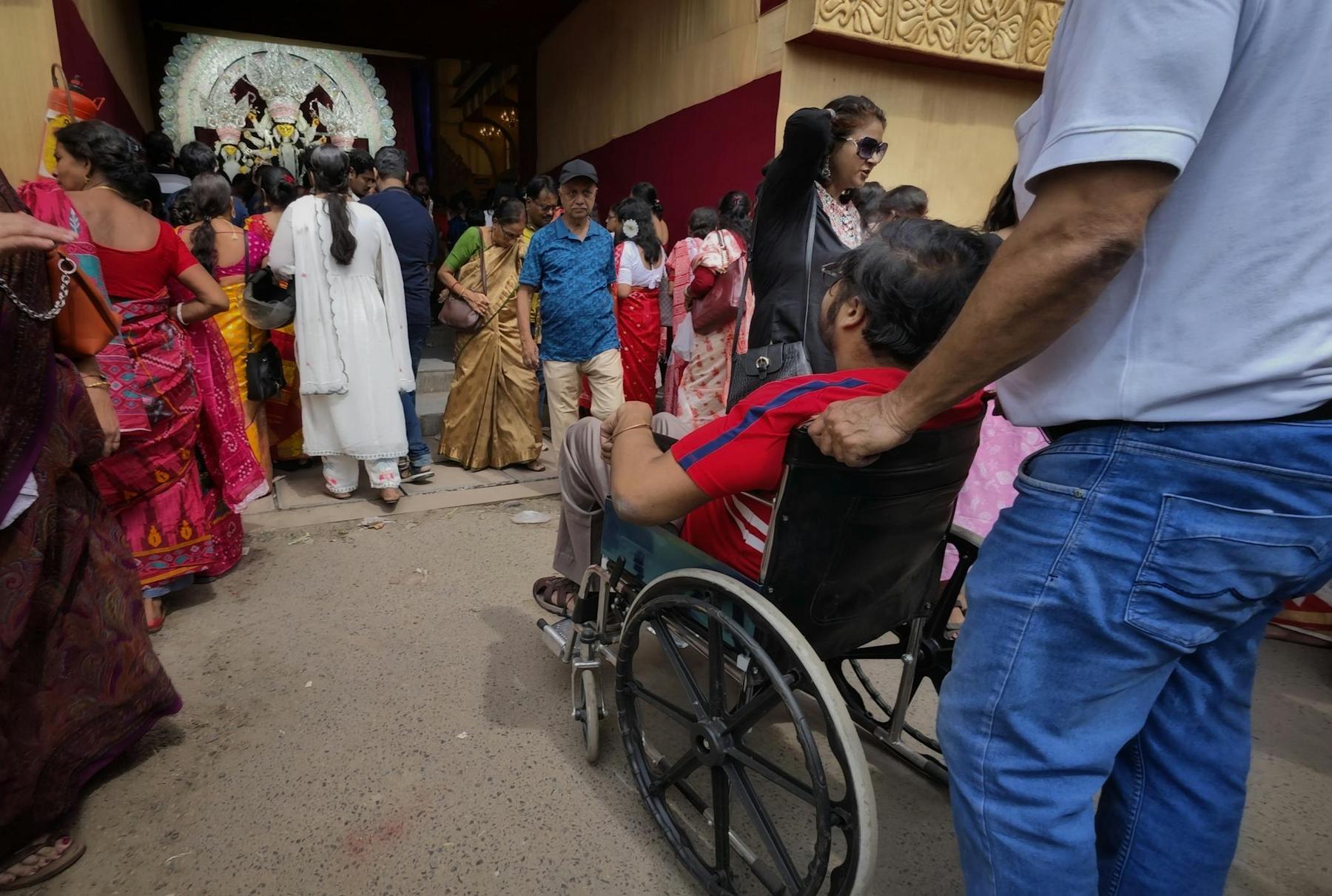When everyday sounds feel like sirens, clothing tags become unbearable irritants, and bright lights trigger overwhelming distress, the world becomes an exhausting place to navigate. For autistic individuals and those with sensory processing disorders, these aren’t exaggerations—they’re daily realities that can significantly impact their quality of life, social participation, and ability to engage with their communities. Understanding how to access appropriate sensory support through the NDIS isn’t just about funding equipment; it’s about recognising that sensory differences are valid, real, and deserving of comprehensive support that honours each person’s unique neurological experience.
The landscape of sensory support through the National Disability Insurance Scheme has evolved considerably, particularly following legislative changes introduced in October 2024. For families and individuals in Cairns and Brisbane seeking support for sensory processing challenges, knowing what’s available, what’s fundable, and how to navigate the system makes the difference between struggling daily and thriving with appropriate accommodations.
What Are Sensory Processing Difficulties and How Common Are They in Autism?
Sensory processing difficulties represent a fundamental aspect of the autistic experience, affecting between 45% to 96% of people on the autism spectrum. This significant variation in prevalence reflects an important truth: sensory processing is deeply individualised, with no two people experiencing the sensory world identically.
At its core, sensory processing refers to how our brains receive, interpret, and respond to information from our senses—not just the commonly recognised five senses of sight, sound, touch, taste, and smell, but also proprioception (body position awareness) and vestibular input (balance and movement). When sensory processing differs from neurotypical patterns, it can manifest in three primary ways:
Hypersensitivity occurs when individuals overreact to sensory input. A person might find everyday sounds painfully loud, experience clothing textures as physically distressing, or become overwhelmed by bright lights or strong smells. These aren’t preferences—they’re neurological responses that can trigger genuine distress, anxiety, or physical discomfort.
Hyposensitivity represents the opposite pattern, where individuals underreact to sensory information. They may have reduced awareness of pain, temperature changes, or hunger cues. This can lead to safety concerns and difficulties recognising when their body needs attention.
Sensory seeking behaviours emerge when individuals actively pursue intense sensory experiences—jumping, spinning, crashing into objects, or seeking out strong tastes and textures. These aren’t misbehaviours; they’re neurological needs for specific types of sensory input that help with regulation and comfort.
What makes sensory support particularly complex is that one autistic person might struggle intensely with noise whilst remaining unaffected by bright lights, whilst another experiences the exact opposite pattern. This individualisation demands personalised assessment and tailored support strategies rather than one-size-fits-all solutions.
What Types of Sensory Support Equipment and Strategies Are Available Through the NDIS?
The NDIS recognises a comprehensive range of sensory support options, though recent legislative changes have refined what qualifies for funding. Understanding these categories helps families and support workers identify appropriate interventions.
Weighted products remain amongst the most commonly requested sensory supports. Weighted blankets, vests, and lap pads provide deep pressure input that many individuals find calming and regulating. Research suggests these items may improve sleep quality and reduce anxiety, though they’re now classified as high-risk items requiring NDIA approval and professional recommendation.
Auditory supports have become increasingly accessible, with noise-cancelling headphones frequently approved for individuals who experience sound hypersensitivity. These tools enable participation in environments that might otherwise prove overwhelming—schools, shopping centres, public transport, and community activities.
Vestibular and proprioceptive equipment addresses movement and body awareness needs. Sensory swings, hammocks, and balance boards provide crucial input for individuals who struggle with spatial awareness or require specific types of movement for regulation. Trampolines, whilst beneficial for some, now require NDIA approval due to their classification as high-risk equipment.
Tactile supports encompass a range of items providing touch-based sensory input. This category includes fidget tools that support focus and anxiety reduction, chewable jewellery for oral sensory needs, textured toys, brushing tools, and massage implements. However, the October 2024 legislative changes have excluded many fidget toys as “everyday recreational items,” making professional justification crucial for funding approval.
Visual sensory tools create calming visual experiences through lava lamps, fibre optic lighting, liquid motion bubblers, and light projectors. These items can transform overwhelming environments into sensory-friendly spaces that support regulation and wellbeing.
Environmental modifications represent perhaps the most impactful yet often overlooked category of sensory support. Creating dedicated calm-down spaces with soft lighting, comfortable seating, sound-absorbing materials, and visual supports can fundamentally change how an individual experiences their home, school, or workplace.
Therapeutic interventions funded through the NDIS include occupational therapy with sensory integration focus, music therapy, and structured sensory diet delivery. These professional services don’t just provide equipment—they build lifelong skills for sensory regulation and self-advocacy.
| Support Category | Examples | Approval Requirements | Primary Benefits |
|---|---|---|---|
| Weighted Products | Blankets, vests, lap pads | NDIA approval + OT recommendation | Deep pressure, calming, improved sleep |
| Auditory Supports | Noise-cancelling headphones | Low-cost approval (under $1,500) | Reduced overwhelm in loud environments |
| Movement Equipment | Swings, balance boards, trampolines | High-risk approval required | Vestibular input, spatial awareness |
| Tactile Tools | Fidgets, chewables, textured items | Varies by item (many now excluded) | Focus, anxiety reduction, oral needs |
| Visual Supports | Lava lamps, fibre optic lights | Generally low-cost approval | Visual calming, reduced overwhelm |
| Environmental Mods | Sensory rooms, lighting changes | Assessment required, varies by cost | Comprehensive environmental support |
| Therapeutic Services | OT, music therapy, sensory diet | Therapy budget allocation | Skill-building, ongoing strategies |
How Has the October 2024 NDIS Legislation Changed Sensory Support Funding?
The NDIS underwent significant legislative reform on 3 October 2024, fundamentally altering how sensory supports are funded. These changes introduced explicit lists defining what is and isn’t an NDIS support, replacing the previous broader interpretation of “reasonable and necessary” criteria.
Under the new framework, supports must now meet seven specific criteria to qualify for NDIS funding. The support must be necessary for disability-related needs, support the participant’s goals and aspirations, facilitate social and economic participation, represent value for money, be effective and beneficial, align with reasonable family expectations, and be appropriately funded by the NDIS rather than other systems.
The transitional rules introduced Schedule 1 (the Supports List) and Schedule 2 (the Excluded Supports List). Schedule 1 explicitly includes assistive technology and products for personal care and safety, assistive equipment for recreation, communication and information equipment, home modifications, therapy and rehabilitation support, support worker assistance, and animal-assisted therapy when used therapeutically by qualified professionals.
Crucially, Schedule 2 now excludes standard household items not modified or adapted for disability, everyday recreational items including trampolines, standard swings, bean bags, most fidget toys, day-to-day living costs, and supports that are the responsibility of health, education, housing, or justice systems.
This shift has particular implications for sensory support. Weighted blankets, previously accessible through various pathways, now require formal NDIA approval as high-risk items. Body socks similarly require approval. Many fidget toys, once routinely funded, are now explicitly excluded unless professionally justified as necessary for specific disability-related functional needs rather than general use.
The legislation includes a 12-month transition period with important grace provisions. Participants who accidentally spend less than $1,500 on now-excluded items won’t face debt collection for their first two mistakes, with the NDIA providing education instead. Purchases made before 3 October 2024 can still be claimed even if the items now appear on the exclusion list, and cancellation fees are also covered—though this grace period doesn’t extend to illegal items.
For service providers and families in Cairns and Brisbane, these changes demand increased diligence in documenting how sensory supports meet the refined funding criteria. The emphasis has shifted towards demonstrating clear functional need, therapeutic justification, and linkage to specific NDIS plan goals.
What Role Do Occupational Therapists Play in Accessing Sensory Support?
Occupational therapists (OTs) serve as essential gatekeepers and advocates in the sensory support journey. Their expertise bridges the gap between identifying sensory processing differences and accessing appropriate NDIS-funded interventions.
A qualified occupational therapist with sensory expertise conducts comprehensive functional capacity assessments that examine how sensory processing difficulties impact daily functioning across home, school, work, and community environments. These assessments don’t merely identify sensory preferences—they document the functional implications of sensory differences and establish the “reasonable and necessary” foundation required for NDIS funding.
From these assessments, OTs develop individualised sensory regulation plans that outline specific strategies, environmental modifications, and equipment recommendations. These plans become crucial documentation when requesting NDIS funding, particularly for high-risk or high-cost items that require professional justification.
The occupational therapist’s role extends beyond assessment. They provide direct therapy sessions focused on building sensory regulation skills, teach coping strategies that reduce reliance on equipment alone, educate families and educators about creating sensory-friendly environments, and write detailed letters of recommendation that articulate why specific equipment meets funding criteria.
How Do You Actually Access Sensory Support Through Your NDIS Plan?
Navigating the NDIS system to secure sensory support requires understanding both the practical steps and the strategic documentation needed to demonstrate eligibility under the refined October 2024 criteria.
The journey begins with NDIS plan development. During planning conversations with NDIA representatives, clearly articulating sensory challenges and their impact on daily functioning becomes crucial. Rather than simply requesting equipment, frame needs around functional goals: “I want to manage sensory needs so I can focus in class,” “I want to feel calmer during community outings,” or “I want to reduce anxiety in social situations through sensory strategies.” These goal statements create the foundation for justified support funding.
Professional assessment follows as the next critical step. For most sensory supports—particularly high-risk items like weighted blankets or equipment exceeding $1,500—obtaining formal assessment from a qualified allied health professional is essential. This assessment should document specific sensory processing differences, explain how proposed equipment addresses functional needs, link recommendations to NDIS plan goals, and provide evidence of effectiveness for the individual’s particular presentation.
The documentation preparation phase requires gathering assessment reports, obtaining quotes from suppliers for higher-cost items, articulating clear connections between equipment and plan goals, and assembling evidence demonstrating “reasonable and necessary” criteria. This documentation isn’t bureaucratic box-ticking—it’s advocacy that translates lived sensory experiences into language the NDIS system recognises and values.
Submission and approval processes vary depending on plan management approach. Self-managed participants purchase items from providers of their choice, retain receipts and invoices, and submit claims through the NDIS participant portal for reimbursement. Plan-managed participants work through their plan manager, who handles payment and claims processes. Agency-managed participants must select NDIS-registered providers, with the NDIA paying providers directly.
The final implementation and review phase ensures sensory supports remain appropriate. Document how equipment is used, track functional improvements, and prepare evidence for annual plan reviews. Sensory needs change as individuals develop, mature, and encounter new environments—regular review ensures supports evolve accordingly.
For high-risk items now requiring NDIA approval, the process has become more stringent. Weighted blankets, body socks, swings, and trampolines all need written recommendations from allied health professionals before purchase. These recommendations must explicitly address why the item is appropriate for the individual, how it will be used safely, and what functional outcomes it will support. Generic letters simply requesting equipment rarely succeed under the current framework.
The cost threshold system provides some flexibility. Items under $1,500 that aren’t classified as high-risk can typically be purchased without prior NDIA approval, though they must still meet funding criteria and relate to plan goals. This allows faster access to commonly approved items like noise-cancelling headphones, visual timers, and certain tactile tools.
What Evidence-Based Assessment Tools Support Sensory Funding Applications?
Strong funding applications rely on evidence-based assessment tools that document sensory processing differences with professional rigour whilst honouring the individual’s lived experience. The My Sensory Experiences Tool (MYSET), developed by Autism Queensland, represents a neurodiversity-affirming approach that empowers autistic and neurodivergent individuals to describe their sensory worlds.
Unlike norm-referenced assessments that label sensory differences as “dysfunctional,” MYSET uses a qualitative card-sorting method proven effective in autism goal-setting contexts. The tool includes 60 “Love/Hate” sensory experience cards and 15 “Seeking/Stimming” cards, accompanied by visual cues and simple text that align with autistic processing strengths. This approach centres the individual’s voice rather than imposing external judgements about appropriate sensory responses.
MYSET’s applications extend beyond individual therapy to school-based planning, positive behaviour support development, employment services, and supported accommodation planning. It’s suitable for children aged five and above, adults, and people with mild intellectual disability, with caregiver and educator versions supporting very young children and those with high support needs.
For NDIS funding purposes, MYSET documentation provides concrete evidence of sensory preferences and challenges, supports goal development that reflects genuine lived experience, and demonstrates individualised rather than assumption-based support planning. When combined with occupational therapy assessments and functional capacity reports, MYSET creates a comprehensive sensory profile that strengthens funding applications.
Beyond MYSET, occupational therapists may employ various standardised assessment tools including the Sensory Profile 2, which examines sensory processing patterns across multiple contexts, and direct observation in natural environments. The most effective assessments combine standardised tools with qualitative information from the individual, family members, educators, and support workers to create a holistic understanding of sensory needs.
Documentation should move beyond simply identifying sensory differences to articulating functional impacts. How do sound sensitivities affect school attendance? How does tactile defensiveness impact personal care routines? How does sensory seeking behaviour influence community participation? These functional connections demonstrate why sensory support isn’t merely desirable—it’s necessary for achieving NDIS plan goals and facilitating social and economic participation.
Moving Forward With Sensory Support
The landscape of sensory support for autism and sensory processing disorders through the NDIS continues to evolve, particularly in response to the October 2024 legislative changes. For families and individuals in Cairns and Brisbane, success in accessing appropriate support requires understanding both the refined funding criteria and the evidence-based interventions that genuinely improve quality of life.
Sensory processing differences aren’t temporary challenges to be overcome—they’re enduring aspects of neurodivergent identity that deserve recognition, accommodation, and support. The most effective approaches combine equipment provision with environmental modifications, skill-building through therapy, and advocacy for sensory-friendly spaces across home, education, work, and community settings.
The research evidence, whilst showing variable quality across intervention types, consistently demonstrates that sensory support can meaningfully improve outcomes across motor skills, social-emotional regulation, challenging behaviour, community participation, and overall quality of life. The key lies in individualisation—matching specific sensory strategies and equipment to each person’s unique profile rather than applying generic approaches.
As we move through 2025 and beyond, the emphasis on evidence-based practice, professional assessment, and clear functional justification will only increase. Families and individuals who invest in comprehensive occupational therapy assessment, document sensory impacts thoroughly, and articulate clear connections between supports and goals position themselves for successful NDIS funding outcomes.
Can I still get weighted blankets funded through the NDIS after the October 2024 changes?
Yes, weighted blankets remain fundable through the NDIS, but they’re now classified as high-risk items requiring NDIA approval and a written recommendation from an allied health professional, typically an occupational therapist. The recommendation must explain why the weighted blanket is appropriate for your specific needs, how it will be used safely, and what functional outcomes it will support.
What’s the difference between hypersensitivity and hyposensitivity, and does it matter for NDIS funding?
Hypersensitivity involves overreacting to sensory input—such as experiencing everyday sounds as painfully loud or finding certain textures unbearable. Hyposensitivity, on the other hand, refers to underreacting to sensory information. This distinction matters for NDIS funding because the supports required differ based on the individual’s sensory profile. A professional assessment helps determine which specific interventions are necessary.
Are fidget toys still funded by the NDIS?
Most fidget toys are now on the Excluded Supports List as “everyday recreational items.” However, specialised fidget tools can still be funded if they are professionally justified as necessary for addressing specific disability-related functional needs, such as enhancing focus or reducing anxiety in particular situations.
How do I find an occupational therapist in Cairns or Brisbane who specialises in sensory processing?
You can find specialised occupational therapists through several pathways. Resources include Autism Queensland, local clinics such as Inspire Early Intervention & Wellbeing Clinic, NDIS support coordinators, and Occupational Therapy Australia’s online directory which offers a search function with filters for sensory processing specialisation.
What happens if I purchased sensory equipment before October 2024 that’s now on the exclusion list?
Items purchased before 3 October 2024 can still be claimed even if they now appear on the Excluded Supports List. Additionally, cancellation fees are covered under the grace period provisions. This protection applies during a 12-month transition period, ensuring that pre-reform purchases are not penalised.



